Chapter 11.4 Ongoing Problems and Solutions
Learning Objectives
By the end of this section, you will be able to:
- Describe threats to western peace and security since the end of the Cold War
- Identify some consequences of migration and refugee resettlement in Europe and the United States
- Identify recent and current threats to human rights, including the continued war in Ukraine
- Analyze the effects on poorer nations of the increasing division between the Global North and the Global South
On February 24, 2022, the world watched in horror and frustration as Russian tanks rolled across the Ukrainian border and began bombing cities around the former Soviet republic. This was the second time in fewer than ten years that Russian troops had invaded the nation. In 2014, Russian forces had annexed the Ukrainian region of Crimea. While both invasions were decades in the making, to many they seemed like a rerun of a bygone era. Those who had watched Soviet tanks roll into Budapest and Prague to quell uprisings in the 1950s and 1960s saw the invasion of 2014 and the violence of 2022 as a reminder that some problems, no matter how far in the past, remain unresolved.
Instability in the Post–Cold War World
When the Soviet Union dissolved on December 31, 1991, most in the West celebrated the end of the Cold War, believing that a new world that would uniformly embrace liberal democracy and capitalism was in the process of being born. Political scientist Francis Fukuyama even published a book on the idea in 1992 called The End of History and the Last Man. The argument presented in the book was that the world had been marching toward a Western liberal democratic future for centuries, and with the Soviet Union gone, it had reached the inevitable end of its “ideological evolution.” With the United States as the only remaining superpower, many also assumed the Cold War’s bipolar world would soon evolve into a mostly unipolar one based on U.S. military, cultural, and economic dominance.
With this idea in mind, U.S. president Bill Clinton drafted a foreign policy platform geared to revising and expanding the North Atlantic Treaty Organization (NATO), the alliance for mutual defense forged by the United States and other Western democracies during the Cold War. Clinton aimed to strengthen relationships with post–Soviet Russia, and address ethnic and political strife in the Balkans, Northern Ireland, and Latin America These goals occasionally required using the country’s military, such as in 1995 when Clinton sent a force of twenty thousand to the Balkans as part of a NATO operation to enforce a cease-fire and protect upcoming elections.
One of the most pressing concerns for the United States and the world, however, was the need to secure the thirty-five thousand nuclear weapons then installed in thousands of sites around Eurasia. Many were in states that had separated from the former Soviet Union, such as Ukraine, Kazakhstan, and Belarus. Because these countries were going through a difficult period of transition and instability, many feared that non-state actors, meaning terrorist groups not tied to a specific country, might gain access to the armaments or the material necessary to make them and cause catastrophic damage. Some of the work had begun even before the Soviet Union collapsed. In the summer of 1991, the United States and the Soviet Union had signed the first Strategic Arms Reduction Treaty, or START I, agreeing to each reduce their arms stockpiles by more than 80 percent. After the disintegration of the USSR, however, the need to secure these stockpiles became more pressing. The solution proposed by the United States and supported by Russia was to denuclearize those states that had split from the former Soviet Union but still possessed nuclear weapons. While successful, the effort did run into some difficulties, particularly in Ukraine, which felt that preserving its nuclear weapons would be the best way to deter Russian belligerence in the future. Only after it had secured assurances from the international community that its borders would be respected did Ukraine allow its nuclear weapons to be removed and disassembled in Russia.
The illusion of an enduring post–Cold War peace was shattered on September 11, 2001, when nineteen militant Islamic hijackers took control of four large passenger airplanes. Tragically, two of them were flown into New York City’s World Trade Center (Figure 11.21), one into the Pentagon, and the fourth—after its path was diverted by brave passengers—crashing into a field in Shanksville, Pennsylvania. Investigations revealed that the terrorist attack, which killed nearly three thousand people from many nations, had been orchestrated by al-Qaeda, an Islamic terrorist organization then based in Afghanistan that was financed and led by a militant Saudi Arabian national named Osama bin Laden. According to bin Laden, the attack was carried out in response to U.S. support for Israel and its continued military presence in the Middle East.
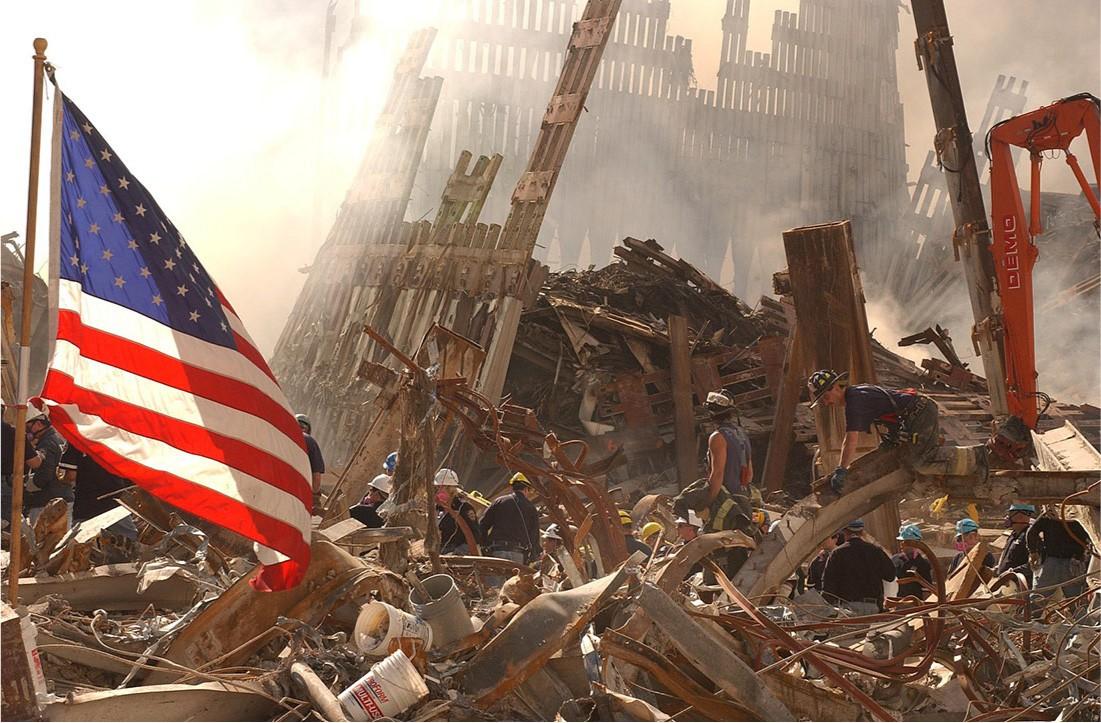
After assessing the damage and collecting global support, the United States launched an attack on Afghanistan with the stated purpose of finding those responsible. This offensive represented the beginning of the U.S. war on terror and resulted in the collapse of Afghanistan’s Islamic fundamentalist Taliban government, many of whose officials fled to the southern parts of the country or into neighboring Pakistan. Most of al-Qaeda’s leadership also escaped, however, including Osama bin Laden. Over the next several years, the U.S. military pursued a policy of eliminating al-Qaeda, rebuilding civil society and infrastructure in Afghanistan, and propping up a democratically elected regime in the country. These efforts were made more difficult, however, by the decision of President George W. Bush to launch a war against Iraq in 2003.
The United States supported Iraq during the Iran-Iraq War (1980–1988) but came into conflict with it during the Gulf War in 1990, when Iraq invaded its neighbor Kuwait. The United States, Great Britain, and thirty-three other nations came to Kuwait’s defense by bombing Iraqi targets and then launching a ground invasion. A mere one hundred hours after the coalition’s ground invasion began, Iraqi forces had retreated from Kuwait, and a cease-fire was in place. Immediately following, uprisings took place in Kurdish and Shi‛ite regions of Iraq that sought to topple President Saddam Hussein’s government. Hussein brutally crushed the attempted revolts, but the coalition forces withdrew from Iraq, leaving him in power. In 2001, in the aftermath of the September 11 terrorist attacks, U.S. foreign policy leaders began to worry that Hussein might acquire weapons of mass destruction (WMDs), possibly including biological weapons. The Bush administration wanted to prevent this and to channel the international goodwill showered on the country after the 2001 attacks toward the goal of removing the Iraqi leader. To this end, the United States built a new coalition of Asian, European, and Latin American countries. It sent Secretary of State Colin Powell to the United Nations to present the argument that Iraq had connections to al-Qaeda and possessed WMDs that made it a threat to international security (Figure 11.22). Even though at the time some in the U.S. intelligence community felt the evidence on which Powell relied was weak or flawed, to secure support for a U.S. invasion, members of the Bush administration such as Vice President Dick Cheney claimed the WMDs existed.

The invasion began on March 19, 2003, just a few weeks after Powell’s presentation. By 2005, it had become obvious to the world that Iraq did not possess WMDs, and the hypothetical al-Qaeda connection had not been demonstrated. The invasion contributed to the violent unraveling of Iraqi society, however, which the coalition forces then struggled for years to bring under control. There were countless civilian casualties; Brown University’s Watson Institute for International and Public Affairs estimates that between 184,382 and 207,156 civilians were killed. While the United States could point to some successes, such as the 2005 Iraq elections and the 2006 conviction of Saddam Hussein for crimes against humanity, the nation’s reputation as a global force capable of projecting power to bring about positive change in the world had suffered greatly.
At the same time, communist North Korea launched its first nuclear weapons test, an event the U.S. government had worked for years to prevent. The test was the culmination of decades of work inside the isolated country. The United States and neighboring countries like South Korea and Japan worried that the unstable North Korean regime might use the weapons against them. During the Obama administration, the United States pursued a policy of “strategic patience” which involved maintaining pressure through economic sanctions and diplomatic isolation while leaving room for further negotiation. This approach sought to compel North Korea to abandon its nuclear ambitions and engage in meaningful discussion. Despite potential breakthroughs, the relationship between the United States and North Korea remains highly contentious and characterized by a lack of trust. Efforts to achieve a denuclearized agreement have been elusive.
Radicalism, Refugees, and Resistance
In 2011, the withdrawal of U.S. combat troops from Iraq was completed, eight long years after the invasion. Hopes that peace in Iraq would last were dashed, however, with the rise of the Islamic State of Iraq and the Levant (ISIL), a fundamentalist and militant Islamic group also referred to as the Islamic State. Formed in 1999, ISIL had fought against the U.S.-led coalition that invaded Iraq in 2003. In 2014, it attacked Iraqi security forces and drove them from a number of cities, including Ramadi, Fallujah, and Mosul, and it killed thousands of members of the Yazidi minority group in Iraq’s Sinjar district. ISIL leaders proclaimed themselves the heads of a new caliphate, an Islamic state led by a ruler claiming to be a successor to Muhammad, with religious and political authority over all Muslims. This is a claim most of the world’s Muslims reject. In response, a military coalition led by the United States returned to Iraq following a request by the Iraqi government. Meanwhile, ISIL’s counterpart in Syria, known as the Islamic State of Iraq and Syria, waged war against both the government of Syria and other nonfundamentalist groups that were also seeking to oust Syria’s president Bashar al-Assad. The U.S.-led coalition that returned to Iraq to fight the Islamic State there intervened in Syria as well.
Instability in Iraq and Syria led to a flood of refugees making their way across the Mediterranean to Europe in 2015 (Figure 11.23). Yet more were fleeing genocidal violence in the Darfur region of Sudan, while many others sought to escape failing states and poverty in numerous parts of the Middle East, Africa, and Asia. These refugees and economic migrants felt they would find a better and safer life in the developed countries of the West, particularly Germany, Sweden, Britain, France, and the United States, and many were willing to risk their lives to achieve this.
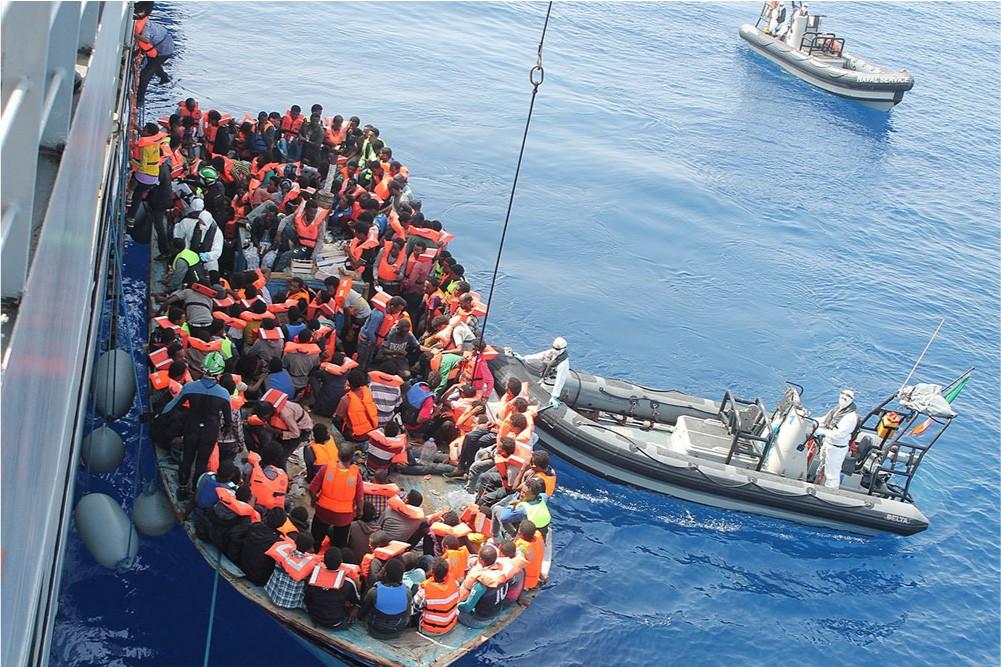
Upon arrival, these groups met various responses. While some argued that the refugees had survived trauma and deserved to be welcomed with open arms, others said they were fleeing circumstances outside the host country’s responsibility and would bring too many cultural and religious changes. For example, many Europeans feared that refugees from Islamic countries would reject the values of the largely secular European nations in which they settled. Many others believe that Muslims embrace political extremism or support acts of terrorism. Responding to the developing migrant crisis, German chancellor Angela Merkel declared, “We can do this!” and promised Germany would welcome 800,000 refugees in 2015.
 LINK TO LEARNING
LINK TO LEARNING
To better understand the motivations and experiences of the refugees who arrived in Europe during the 2015 refugee crisis, the trailer for Human Flow (opens in new tab) can be viewed. Human Flow is a 2017 film about the crisis directed by the renowned Chinese visual artist and activist Ai Weiwei.
While some were heartened by Merkel’s offer, others throughout Europe felt it was short-sighted. They noted that since Germany was in the European Union, bringing refugees there effectively amounted to bringing them into any other country in the EU. Within Germany itself, there was also resistance. Founded in 2014, the German group Patriotic Europeans Against the Islamization of the West (PEGIDA) began conducting weekly marches in cities like Dresden, declaring that opening the doors to the Islamic world would spell the end of Europe (Figure 11.24). While PEGIDA made a point not to categorically oppose refugees, members continue to openly oppose the presence of the Islamic religion and culture within Germany.
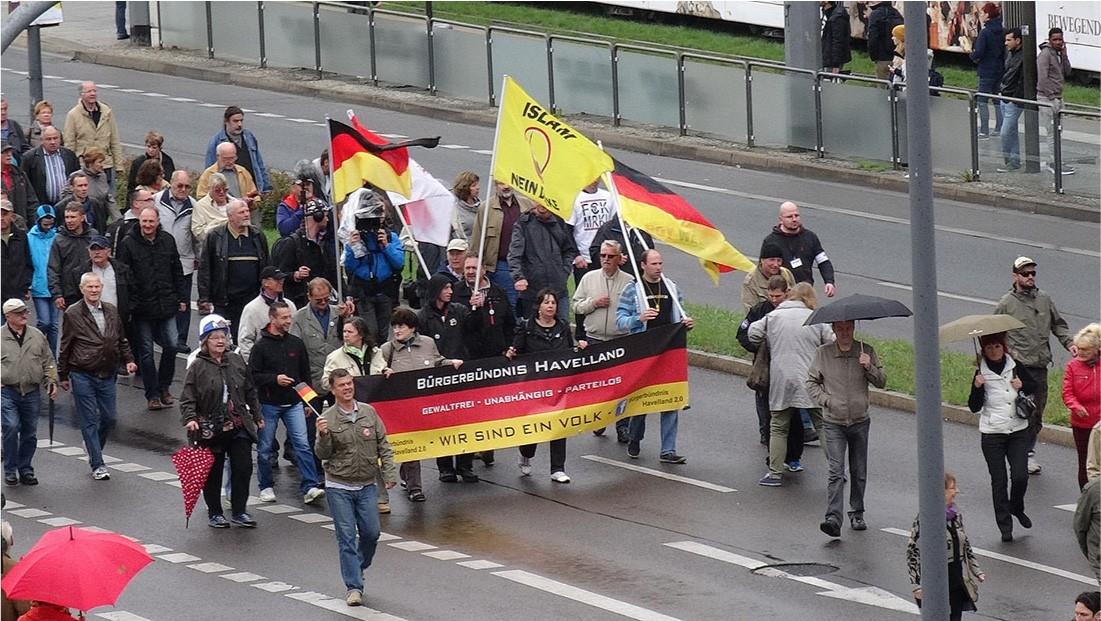
PEGIDA is just one of several ultranationalist movements that support an extreme form of nationalism and often seek to create ethnically homogeneous homelands. Others are Golden Dawn in Greece, the English Defence League in Britain, and the Identitarian Movement of Austria. Such groups advocate the establishment of ethnic-based citizenship, resist non-European immigration, and generally promote more conservative social policies. Europe is not the only continent to see a resurgence of xenophobic political activism in the last few decades. The Nationalist Front of Mexico was founded in 2006 and advocates a neofascist ideology and a retreat from globalization. In the United States, the American Freedom Party, American Identity Movement, Patriot Front, National Justice Party, and others promote similar ideas. These groups are especially concerned with preventing immigration to the United States from Latin America (Figure 11.25). They are generally in the neofascist mold and advocate a United States that is overwhelmingly White and European in culture.
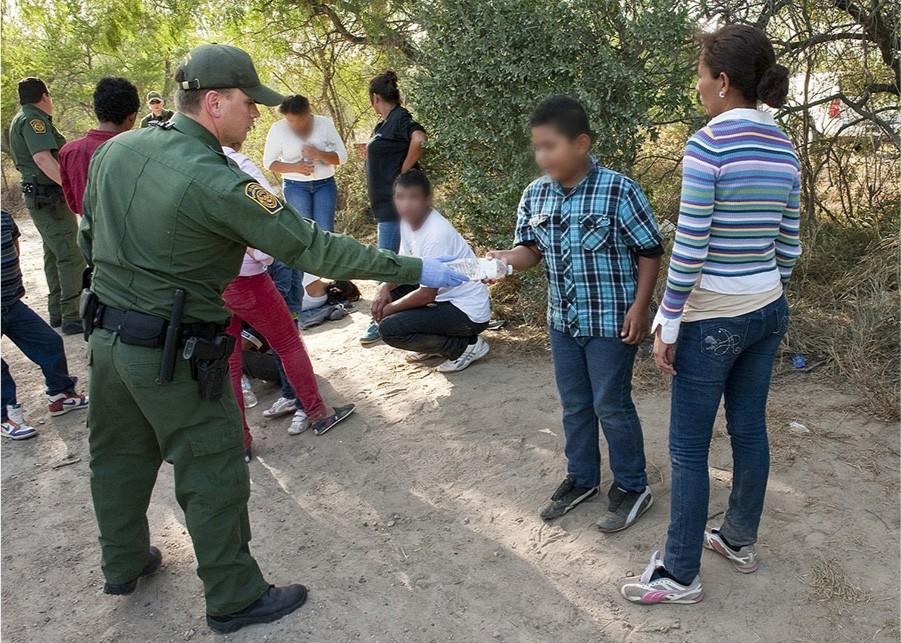
State Instability and Human Rights Abuses
Many of the migrants arriving at the southern border of the United States are fleeing economic and political disorder in their home countries. This pattern goes back many decades. For example, many thousands of Salvadoran migrants have entered the United States each year, especially during and after the El Salvador Civil War (Figure 11.26). That war began in 1979 with a military coup supported by the United States, which feared that radical leftist elements in El Salvador were destabilizing the country and leading it in a direction contrary to U.S. Cold War interests.

By supporting the coup with money, military training, and the sharing of intelligence reports, the United States hoped to return stability to El Salvador, but the opposite occurred. Many in El Salvador felt the military government was illegitimate and staged protests and resistance. The military responded with violence of its own, such as a deadly attack on demonstrators in 1980. There were also rightist paramilitary groups, often referred to as “death squads,” fighting against leftist guerrilla forces in the countryside and committing murders and massacres. As the country descended into chaos, many left and found refuge in the United States. Today these immigrants number about 2.5 million. A similar pattern of civil war and instability in other parts of Central America has also produced human rights abuses and an increase in migration to the United States. The Guatemalan Civil War (1960–1996), for example, led to numerous human rights violations against Guatemalans. These included a reported campaign of violence and terrorism by the government against ethnic Mayans and peasants accused of supporting leftist guerrilla groups. Nicaragua has experienced destabilization since the 1960s as well. Leftist guerrilla organizations fought against the dictatorship of the Somoza family, which ruled until the late 1970s. Then, in 1979, one of the major leftist groups, the Sandinistas, took control. The Sandinistas were socialists, and within months they had opened diplomatic relations with the Soviet Union and later accepted its economic and military assistance. This action alarmed the United States and led it to support resistance to the Sandinista government, which contributed to an escalation of the violence and a number of human rights abuses on both sides.
 LINK TO LEARNING
LINK TO LEARNING
The long-term consequences of the war in El Salvador (opens in new tab) are still obvious today. Watch this brief news report to learn about some of them.
While violence in Central America has declined in the last few decades, it persists elsewhere. Still, Western European countries have been accused of failing to uphold standards of human rights in outlying regions of the world, including South America and Africa. Venezuela, effectively a one-party state since 2007, has been accused by the United States of a number of human rights abuses. These include murder, imprisonment, torture, and government support of armed groups that commit violence against protestors. Similar accusations have been made against the governments in Colombia, Cuba, Ecuador, Peru, and Chile. Chile’s government committed numerous human rights abuses against its people during the dictatorship of Augusto Pinochet (1973–1990). These included torture, execution, and sexual abuse of leftist political opponents. While Pinochet has since died, human rights organizations claim the abuses continue, particularly against Indigenous groups and those identifying as LGBTQ+.
Governments across Africa have often used violence to break up anti-government protests. For example, in the small southern African country of Eswatini (formerly Swaziland), government forces broke up a pro-democracy protest in 2021, killing eighty people and injuring more than two hundred. Many more who protested the regime of the Eswatini king Mswati III were arrested (Figure 11.27). Similar actions against protestors in Sudan that year led to the deaths of fifty-three people. And other government abuses across the continent have resulted in long prison sentences and even death for protestors, whistleblowers, and journalists who have challenged government policies.

In Asia, Myanmar and China demonstrate that human rights violations can emerge where racial and religious prejudices against minorities are pronounced. The Rohingya people, a Muslim minority living in predominantly Buddhist Myanmar, have faced oppression for generations, including being officially excluded from citizenship in 1982. Because they are a small minority and viewed with suspicion by the larger Buddhist population, they have long been vulnerable to attacks. In 2017, brutality against the Rohingya escalated dramatically and triggered a mass migration of more than 700,000 to neighboring Bangladesh. As of 2022, nearly a million Rohingya people were still living in large refugee camps there.
Women and girls often face the brunt of violence when instability reigns or when states sponsor oppression against minorities. In 2014, the world condemned the Islamic terrorist group Boko Haram’s attack on a girl’s high school in Nigeria and its kidnapping of 276 mostly Christian female students, many of whom were forced into marriages with Boko Haram members or sold into sexual slavery. Those who escaped have described beatings, sexual assaults, and torture. While this event captured global attention, including from First Lady Michelle Obama, many similar kidnappings have occurred before and since with almost no international coverage at all (Figure 11.28).
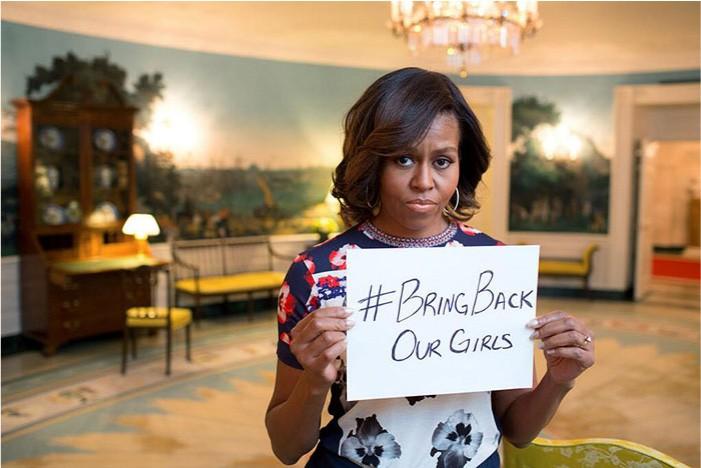
DUELING VOICES
The Debate Over Veils and Head Coverings
Whether or not Muslim women should be required—or allowed—to wear veils or head coverings is a contentious issue. In some countries with Muslim-majority populations, such as Iran, Saudi Arabia, and Afghanistan, the law requires women to veil their heads and/or faces in public. In other Muslim countries, however, women can choose whether to do so.
Muslim women living in the West also must confront the question of whether to cover their heads and faces in public. Sometimes government authorities do not give them a choice. In 2004, France banned the wearing of veils in public schools, and in 2011 it banned veils that cover the entire face, as did Belgium. Women cannot work for the French government while veiled, nor can anyone wearing an overtly religious symbol such as a crucifix or skullcap. French authorities claim these bans ensure the secular nature of the French state, a bedrock principle dating from the French Revolution and enshrined in Article 1 of the French Constitution of 1958.
Supporters of women’s right to veil argue that such laws are a backlash against Muslim immigrants and disproportionately affect Muslim women, and they point out that French public schools celebrate Christian holidays. While conservative politicians generally support the bans, some liberals would prevent veiled women from working in day care centers, and the Socialist junior minister for women’s rights questioned whether veils should be allowed in universities.
Muslim women themselves are divided in their opinions. Some consider veils symbols of oppression and argue that they can be good Muslims without covering themselves. One New York City woman explained, “I am a Muslim woman, and I have never worn a veil, nor has my mother or her sisters. While we are devoted to Islam, we believe that God exists on the inside and not in outward symbols that are too often thwarted and perverted by political interests.”
Many others voluntarily choose to wear veils or headscarves and do not feel pressured to do so. They consider them a symbol of their cultural identity or religious piety. One young Muslim American woman explained to the New York Times, “I chose to start wearing the veil three years ago, even though the girls in my family don’t. I chose to wear it myself after I studied Islam and thought it was a beautiful way to express my love for my religion and nothing more.”
- Why did France ban full-face veils? Do you find the government’s arguments convincing?
- Do you think banning religious symbols is the best way to achieve the separation of church and state? Why or why not?
Continued War in Ukraine
Tensions over economic resources have also increased in Europe itself, although interests are often shrouded in reference to history and security. Russia raises concerns about extremists in Ukraine, its nuclear weapons, and claims historic ties that suggest Kievan Rus was always part of Russia. The Russian and Ukrainian economy are closely linked. They had long been vital trading partners and at least a third of Russia’s crude oil is shipped through Ukraine. Yet Ukraine has moved closer to western European countries, creating a dilemma for Russia when it comes to industrial standards and modernization and also challenged Russia’s quest for self-sufficiency.
On 24 February 2022, Russia invaded Ukraine. The invasion has caused thousands of deaths and millions of displaced people, many of whom have fled into Poland and made their way to other European and western states. The war was a continuation of Russian actions of 2014 that resulted in the annexation of Crimea. IN 2022 Russia supported the Donetsk People’s Republic and the Luhansk People’s Republic as a means to justify its current intervention.
More Russian soldiers came to the Donbas region of eastern Ukraine on 21 February 2022. The invasion was condemned by many countries, including most European countries and the United States. In Russia, many opposition groups formed anti-war protests. Many of the protesters have been arrested by the Russian government.
The war in Ukraine reveals potential future challenges in Europe. It underscores the need for open lines of communication and effective crisis resolution to ease tensions and prevent further escalation. After a period of revolutionary wars, constitution-building, and more wars, Europe must look to its past to find its promise for the future. The future of Europe depends on fostering dialogue, respecting international norms, and finding peaceful resolutions to conflicts, as well as promoting cooperation and collaboration among nations. It highlights the importance of working together to address and adapt to the evolving landscape and contribute to building a peaceful and prosperous future for Europe and its people.
Global North and Global South
The reality for many people in Latin America is a stark reminder of the wide gulf between what some refer to as the Global North and the Global South. These labels describe the rough geographic pattern evident in the global distribution of the world’s richest and poorest countries. Most of the richest countries, such as the United States, Canada, and the EU countries, are in the north, while poorer countries predominate in the south (Figure 11.29). However, there are also wealthy countries such as Australia and New Zealand in the southern hemisphere, so the terms actually reflect economic realities and not geography. Furthermore, while not all people living in Global South countries are poor, those that are earn only a fraction of what the average person in a Global North country earns. The world is complicated, and complexity resists simple categorizations.

Many of the economic problems in the Global South can be traced to imperial exploitation, sometimes going back centuries. Countries in the Global North, especially in Europe, tended to reap the benefits of this exploitation. The legacy of colonialism and imperialism in Latin and South America continues to affect these countries in the form of high levels of government corruption, poorly developed industries, and borders drawn for the benefit of imperialist powers rather than by the groups living there. In Africa, borders charted to benefit imperialist powers often separated members of the same ethnic group into different countries while forcing hostile groups into the same country.
Even Global South countries that are resource-rich have struggled to develop their economies over the past few decades. Indeed, they often have more difficulty responding to their domestic needs than countries that are relatively resource-poor. This problem, sometimes dubbed the resource curse, a term coined by British economist Richard Auty in 1993, makes resource-rich countries prone to authoritarianism, high rates of conflict, and low rates of economic growth.
These difficulties have been at least partially alleviated by the efforts of international organizations like the World Bank and the International Monetary Fund (IMF). The World Bank has encouraged community-driven development by supporting government planning and investments that prioritize a bottom-up approach. It has helped countries manage the problem of persistent natural disasters. And it has provided funds to meet educational needs, to provide infrastructure for clean water, and to combat hunger by boosting agricultural production. Similarly, the IMF has provided a pool of monetary resources countries can access when they fall into financial difficulties.
While both organizations can point to their many achievements, they have occasionally made problems worse. Critics like the economist Joseph Stiglitz, for instance, point to the many conditions the IMF imposes on countries when it comes to help. These include increased privatization, elimination of protectionist policies, higher interest rates, and austerity measures that reduce government spending. Such conditions, Stiglitz and others have noted, tend to benefit foreign creditors from the Global North and hurt poor workers in the countries the IMF purports to be saving. Similar criticisms have been directed against the World Bank. Many have argued that the organization lacks representation from the Global South, so poor countries have relatively little influence within the organization and on its policies and actions.
What’s Next for Western Civilization?
The journey through the pages of this textbook on Western civilization brings us to an important juncture, where we ask the question: What lies ahead for Western civilization and the world? The future holds both challenges and opportunities, as our world continues to evolve. Western civilization has contributed significantly to our world today and will continue to do so. Throughout history, the West in the world has shown a capacity for adaptation and renewal, and this resilience will undoubtedly help it navigate the complexities of the future.
Western countries continue to face the need for internal reform as they also reckon with their historical legacies around the world. This reform has entailed acknowledging the injustices of the past, especially those stemming from the Industrial Revolution and colonization that began in the eighteenth century. The political revolutions and nationalism that followed in the next century helped advance a more inclusive political system, but even today there remain large groups of under-represented people, unable to access true equality.
Furthermore, Western countries have long recognized their future transcends national borders. Overcoming the challenges of international cooperation, the legacies of the Cold War, climate change, trade agreements, and technological advancements require collective action, as the benefits of the European Union have shown. Western societies can look to history to tackle these challenges while recognizing that their impacts reverberate far beyond their own borders.
As we conclude this textbook the story of Western civilization continues to unfold, and each generation will continue to shape its narrative. We all continue to navigate the complexities of the modern world, and this survey reflects on the unique place of Western civilization within the larger global context. It closes with the optimistic idea that along with lessons, and achievements of the past, Western civilization can and will be a part of building a future that embodies global achievements and universal rewards.
an Islamic terrorist organization financed and led by militant Saudi Arabian national Osama bin Laden and responsible for the September 11 attacks on the United States in 2001
a fundamentalist and militant Islamic group that grew in power and waged a war in Iraq and Syria following the U.S. invasion of Iraq in 2003
organizations that support an extreme form of nationalism and often seek ethnically homogeneous homelands
the problem that makes resource-rich developing countries prone to authoritarianism, high rates of conflict, and low rates of economic growth

